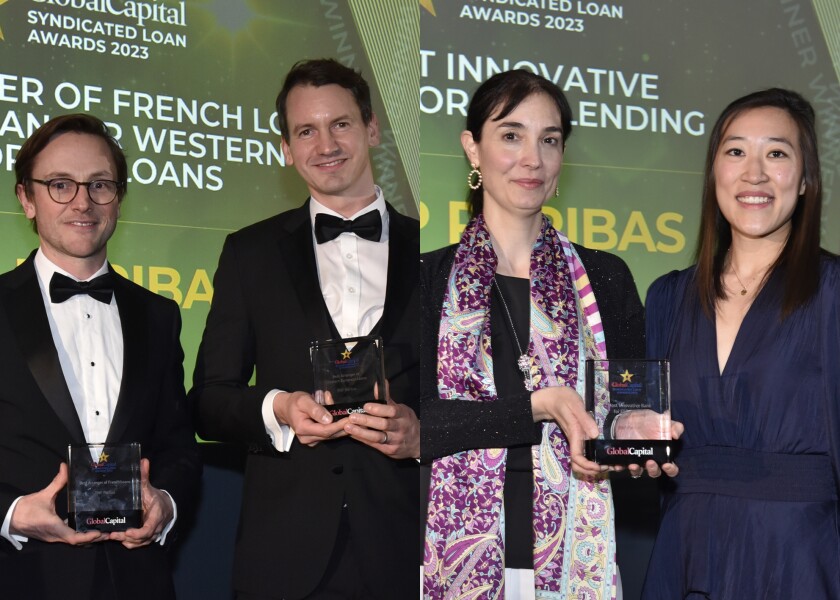BNP Paribas was behind many of the deals recognised in GlobalCapital’s 2023 Loan Awards, what factors contribute to this dominance?
EMEA is our core market and we’ve been a leader in this region for at least the last decade. We cover the entire credit spectrum and all product types. This gives us a unique position in terms of expertise and the ability to understand how the market is evolving. In 2023, we had to adapt to a new environment characterised by rate hikes, geopolitical risk and market volatility. This created tension for borrowers and led to a sharp decrease in overall volumes. Most of the borrowers across EMEA chose us as a trusted partner to help them through these challenges. We have probably the widest client base in Europe and very deep relationships with most of our clients. This allowed us to help them tap the right windows across all loan segments — whether that was investment grade, leveraged, asset financing or ESG oriented”.
How does the bank structure its loan coverage to ensure it remains a leading player ?
In terms of structure we are a constellation of local teams with a global reach. The reality is we need to be close to our clients. BNP Paribas has half a dozen or so teams across EMEA that cover their home market and surrounding countries. That gives us both proximity to every market and a very wide reach. The global aspect is also key because our teams are talking with other regions such as the Americas and Asia-Pacific to understand how different markets are evolving and what value-added we can bring to clients in Europe.
BNP Paribas was involved in the financing for the acquisition of Messer, which won Deal of the Year, M&A Loan of the Year and German, Swiss and Austrian Deal of the Year. What were some of the other stand out transactions for the bank in 2023?
In a year of overall low volumes we were very visible in the market. There was the €2bn loan for Teleperformance’s acquisition of Majorel, which was recognised as GlobalCapital’s French Deal of the Year. We had two major spin-off financings in the market. One was Sodexo’s Pluxee, the other was Solvay’s Syensqo, which was recognised as Benelux Deal of the Year.
I would also like to highlight our role as sole lead on the €8bn credit facility for TenneT to finance the firm’s investment in the energy transition. We had detailed discussions with the client about their needs and how to hedge risks. It’s an example of the advisory relationship we have with clients to guide them through a transaction. BNP Paribas also played a key role in reopening markets. We were the bank that relaunched supply in the leveraged market at the start of the year and we ended up leading 35%-40% of leveraged transactions. We led the Groupe SEB €650m deal in December that reopened the Schuldschein market in France after almost a year.
The bank won Most Innovative Bank for ESG lending and was involved in the Sustainability-Linked Loan of the Year for Porsche. Have market conditions affected the focus on sustainability?
Sustainability has become a very important criteria across EMEA and this holds even when market volumes are down. We were also sustainability coordinator on WH Smiths’ sustainability-linked RCF. In Italy, we worked on Italo’s €1.4bn green loan. Sustainability is a key feature we discuss with clients even where the majority of the loan isn’t going to sustainable or ESG-related endeavours. The reality is there is no deal during which we don’t talk about putting sustainability features into the documentation. All firms from big to small are thinking about it, and we’re helping them on the journey as they define their own policies and ways of communicating with investors. We’re very focussed on helping the transition to a low carbon world. Our real asset teams are heavily involved in the energy transition — both established renewables and emerging asset classes like hydrogen — and helping borrowers think about innovative financing structures.

